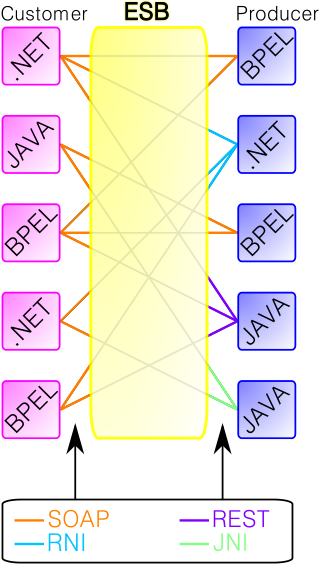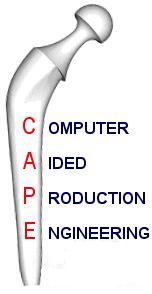Related Research Articles

Enterprise resource planning (ERP) is the integrated management of main business processes, often in real time and mediated by software and technology. ERP is usually referred to as a category of business management software—typically a suite of integrated applications—that an organization can use to collect, store, manage and interpret data from many business activities. ERP systems can be local-based or cloud-based. Cloud-based applications have grown in recent years due to the increased efficiencies arising from information being readily available from any location with Internet access.

In computing, a legacy system is an old method, technology, computer system, or application program, "of, relating to, or being a previous or outdated computer system", yet still in use. Often referencing a system as "legacy" means that it paved the way for the standards that would follow it. This can also imply that the system is out of date or in need of replacement.

An embedded system is a computer system—a combination of a computer processor, computer memory, and input/output peripheral devices—that has a dedicated function within a larger mechanical or electronic system. It is embedded as part of a complete device often including electrical or electronic hardware and mechanical parts. Because an embedded system typically controls physical operations of the machine that it is embedded within, it often has real-time computing constraints. Embedded systems control many devices in common use. In 2009, it was estimated that ninety-eight percent of all microprocessors manufactured were used in embedded systems.
Middleware in the context of distributed applications is software that provides services beyond those provided by the operating system to enable the various components of a distributed system to communicate and manage data. Middleware supports and simplifies complex distributed applications. It includes web servers, application servers, messaging and similar tools that support application development and delivery. Middleware is especially integral to modern information technology based on XML, SOAP, Web services, and service-oriented architecture.

Data modeling in software engineering is the process of creating a data model for an information system by applying certain formal techniques. It may be applied as part of broader Model-driven engineering (MDE) concept.
Enterprise application integration (EAI) is the use of software and computer systems' architectural principles to integrate a set of enterprise computer applications.

An enterprise service bus (ESB) implements a communication system between mutually interacting software applications in a service-oriented architecture (SOA). It represents a software architecture for distributed computing, and is a special variant of the more general client-server model, wherein any application may behave as server or client. ESB promotes agility and flexibility with regard to high-level protocol communication between applications. Its primary use is in enterprise application integration (EAI) of heterogeneous and complex service landscapes.
Software prototyping is the activity of creating prototypes of software applications, i.e., incomplete versions of the software program being developed. It is an activity that can occur in software development and is comparable to prototyping as known from other fields, such as mechanical engineering or manufacturing.

Computer-integrated manufacturing (CIM) is the manufacturing approach of using computers to control the entire production process. This integration allows individual processes to exchange information with each part. Manufacturing can be faster and less error-prone by the integration of computers. Typically CIM relies on closed-loop control processes based on real-time input from sensors. It is also known as flexible design and manufacturing.

Computer-aided production engineering (CAPE) is a relatively new and significant branch of engineering. Global manufacturing has changed the environment in which goods are produced. Meanwhile, the rapid development of electronics and communication technologies has required design and manufacturing to keep pace.
A systems integrator is a person or company that specializes in bringing together component subsystems into a whole and ensuring that those subsystems function together, a practice known as system integration. They also solve problems of automation. Systems integrators may work in many fields but the term is generally used in the information technology (IT) field such as computer networking, the defense industry, the mass media, enterprise application integration, business process management or manual computer programming. Data quality issues are an important part of the work of systems integrators.

An information silo, or a group of such silos, is an insular management system in which one information system or subsystem is incapable of reciprocal operation with others that are, or should be, related. Thus information is not adequately shared but rather remains sequestered within each system or subsystem, figuratively trapped within a container like grain is trapped within a silo: there may be much of it, and it may be stacked quite high and freely available within those limits, but it has no effect outside those limits. Such data silos are proving to be an obstacle for businesses wishing to use data mining to make productive use of their data.
Knowledge Discovery Metamodel (KDM) is a publicly available specification from the Object Management Group (OMG). KDM is a common intermediate representation for existing software systems and their operating environments, that defines common metadata required for deep semantic integration of Application Lifecycle Management tools. KDM was designed as the OMG's foundation for software modernization, IT portfolio management and software assurance. KDM uses OMG's Meta-Object Facility to define an XMI interchange format between tools that work with existing software as well as an abstract interface (API) for the next-generation assurance and modernization tools. KDM standardizes existing approaches to knowledge discovery in software engineering artifacts, also known as software mining.
An integration competency center (ICC), sometimes referred to as an integration center of excellence (COE), is a shared service function providing methodical data integration, system integration, or enterprise application integration within organizations, particularly large corporations and public sector institutions.
Event-driven SOA is a form of service-oriented architecture (SOA), combining the intelligence and proactiveness of event-driven architecture with the organizational capabilities found in service offerings. Before event-driven SOA, the typical SOA platform orchestrated services centrally, through pre-defined business processes, assuming that what should have already been triggered is defined in a business process. This older approach does not account for events that occur across, or outside of, specific business processes. Thus complex events, in which a pattern of activities—both non-scheduled and scheduled—should trigger a set of services is not accounted for in traditional SOA 1.0 architecture.
Enterprise forms automation is a company-wide computer system or set of systems for managing, distributing, completing, and processing paper-based forms, applications, surveys, contracts, and other documents. It plays a vital role in the concept of a paperless office.

Guaraná DSL is a domain-specific language (DSL) to design enterprise application integration (EAI) solutions at a high level of abstraction. The resulting models are platform-independent, so engineers do not need to have skills on a low-level integration technology when designing their solutions. Furthermore, this design can be re-used to automatically generate executable EAI solutions for different target technologies.
A canonical model is a design pattern used to communicate between different data formats. Essentially: create a data model which is a superset of all the others ("canonical"), and create a "translator" module or layer to/from which all existing modules exchange data with other modules. The canonical model acts as a middleman. Each model now only needs to know how to communicate with the canonical model and dont need to know the implementation details of the other modules.
The JBoss Enterprise SOA Platform is free software/open-source Java EE-based service-oriented architecture (SOA) software. The JBoss Enterprise SOA Platform is part of the JBoss Enterprise Middleware portfolio of software. The JBoss Enterprise SOA Platform enables enterprises to integrate services, handle business events, and automate business processes, linking IT resources, data, services and applications. Because it is Java-based, the JBoss application server operates cross-platform: usable on any operating system that supports Java. The JBoss SOA Platform was developed by JBoss, now a division of Red Hat.
Operations support systems (OSS), operational support systems in British usage, or Operation System (OpS) in NTT, are computer systems used by telecommunications service providers to manage their networks. They support management functions such as network inventory, service provisioning, network configuration and fault management.
References
- ↑ Gilkey, Herbert T (1960), "New Air Heating Methods", New methods of heating buildings: a research correlation conference conducted by the Building Research Institute, Division of Engineering and Industrial Research, as one of the programs of the BRI fall conferences, November 1959., Washington: National Research Council (U.S.). Building Research Institute, p. 60, OCLC 184031
- ↑ For computer systems, the term "systems integration" has included the plural word "systems" although the singular form has also been used in referring to computer systems.
- ↑ CIS 8020 – Systems Integration, Georgia State University OECD
- ↑ Moore, June (13 December 1982), "Software Reviews, BusinessMaster II+, ledger for CP/M systems", InfoWorld, InfoWorld Media Group, Inc, p. 31, ISSN 0199-6649
- 1 2 Vonderembse, M.A.; Raghunathan, T.S.; Rao, S.S. (1997). "A post-industrial paradigm: To integrate and automate manufacturing". International Journal of Production Research. 35 (9): 2579–2600. doi:10.1080/002075497194679.
{{cite journal}}: CS1 maint: multiple names: authors list (link) - ↑ Merriman, Dan (19 Feb 1996), "Tying it all together", Network World, IDG Network World Inc, p. 51, ISSN 0887-7661
- ↑ Lau, Edwin (2005), "Multi-channel Service Delivery", OECD e-Government Studies e-Government for Better Government, Paris: OECD, p. 52, ISBN 9789264018334, OCLC 224889830
- 1 2 3 4 Gold-Bernstein, Beth; Ruh, William A (2005), Enterprise integration: the essential guide to integration solutions, Addison Wesley, ISBN 0-321-22390-X
- ↑ "The Value of Data-Centric Execution Architecture in System Integration Frameworks for Industrial Energy Assets". Vista Projects Limited.
- ↑ Aircraft/Store Common Interface Control Document Format Standard, SAE International, doi:10.4271/as5609a
- ↑ Gulledge, Thomas (September 2002). "B2B eMarketplaces and small- and medium-sized enterprises". Computers in Industry. 49 (1): 47–58. doi:10.1016/s0166-3615(02)00058-1. ISSN 0166-3615.
- ↑ Hvolby, Hans-Henrik; Trienekens, Jacques H. (December 2010). "Challenges in business systems integration". Computers in Industry. 61 (9): 808–812. doi:10.1016/j.compind.2010.07.006. ISSN 0166-3615.